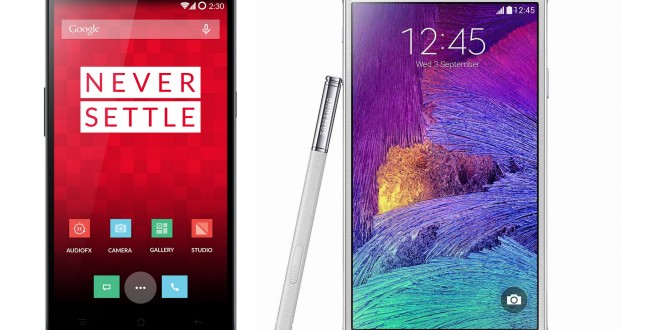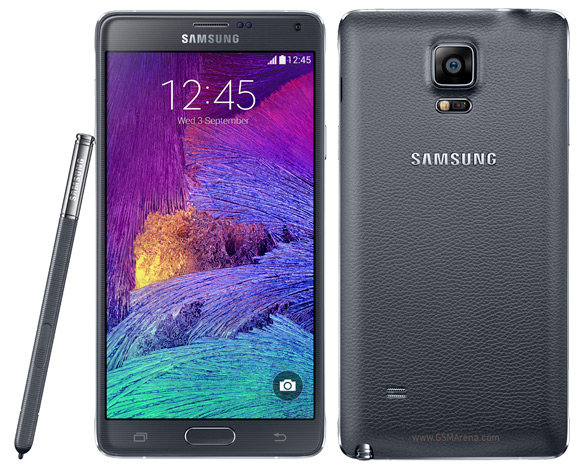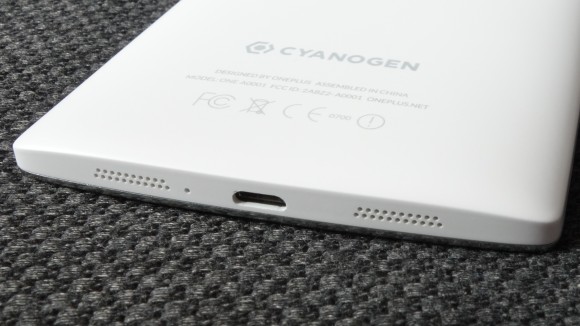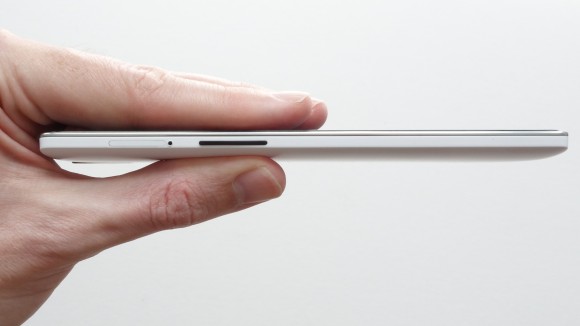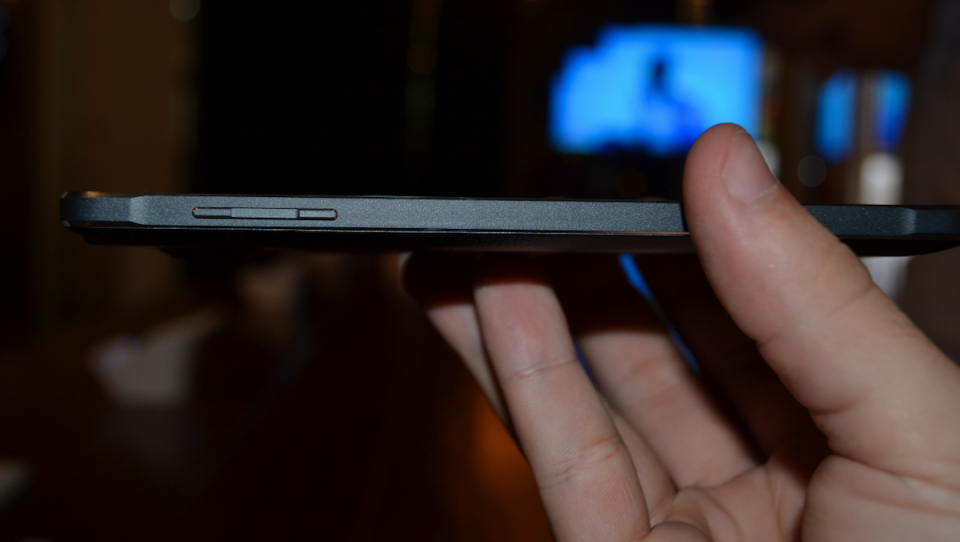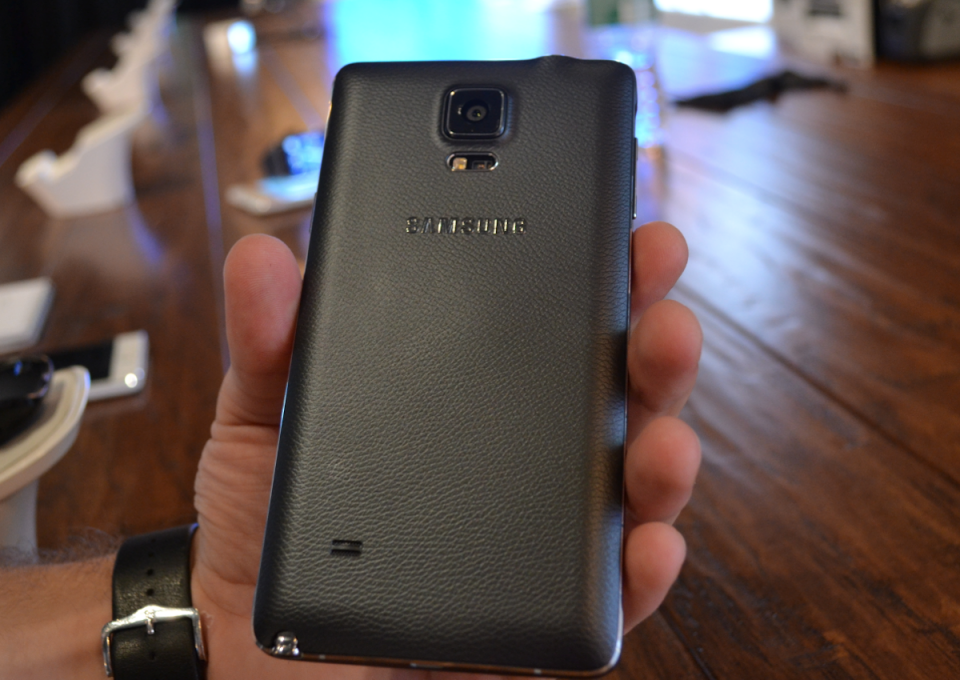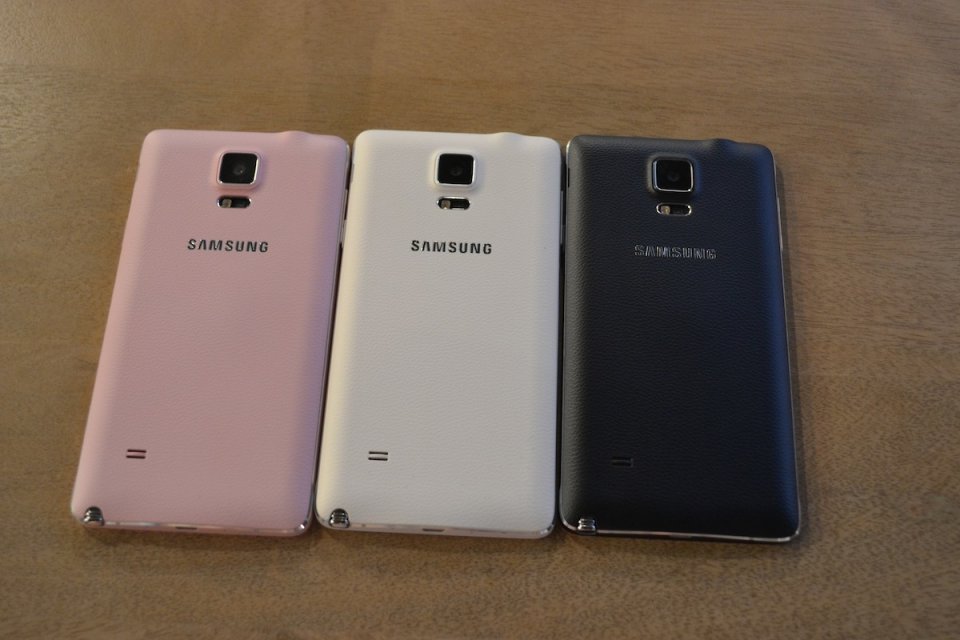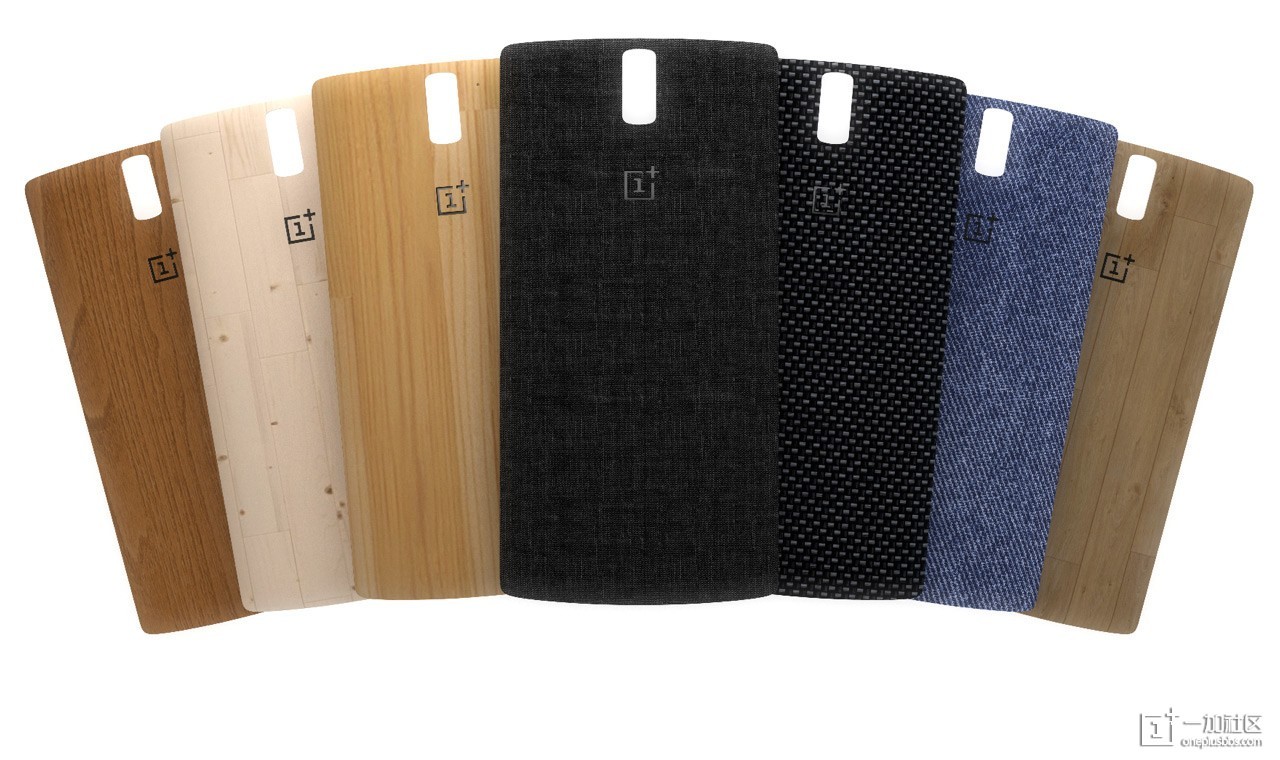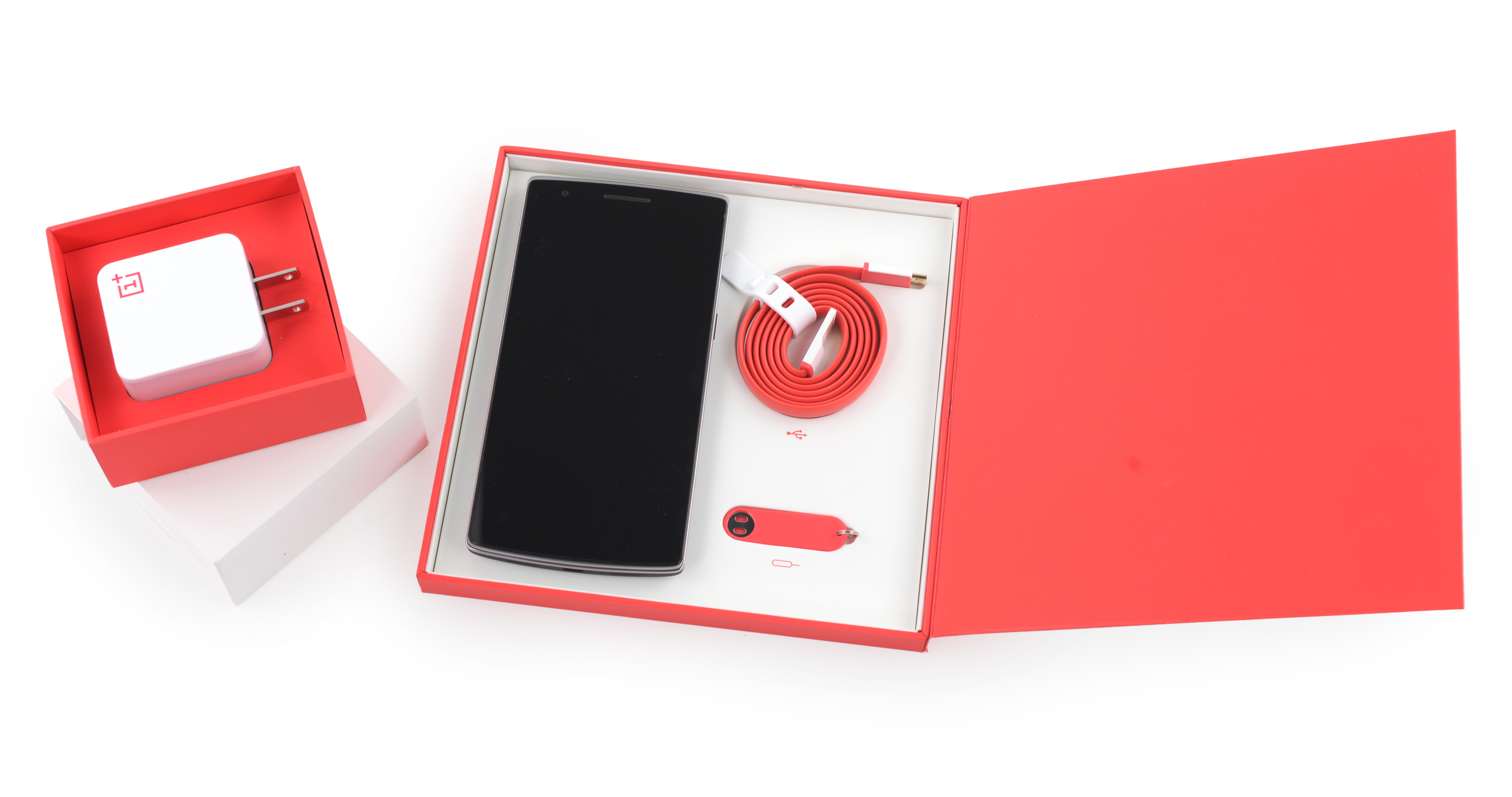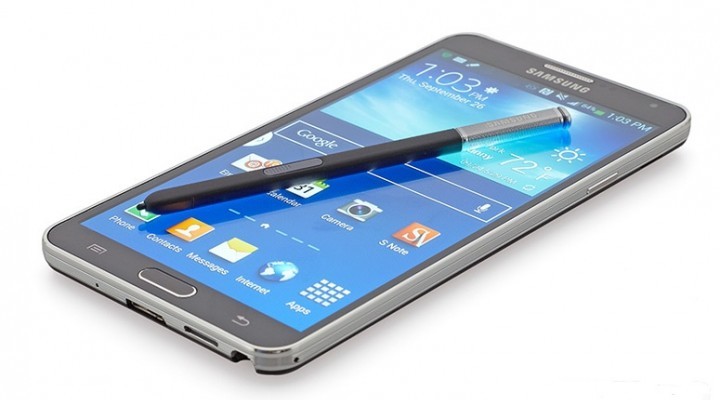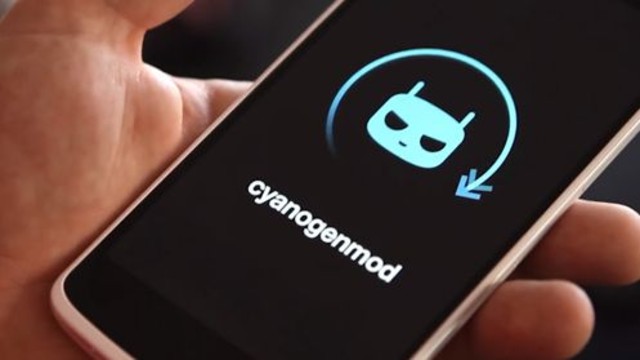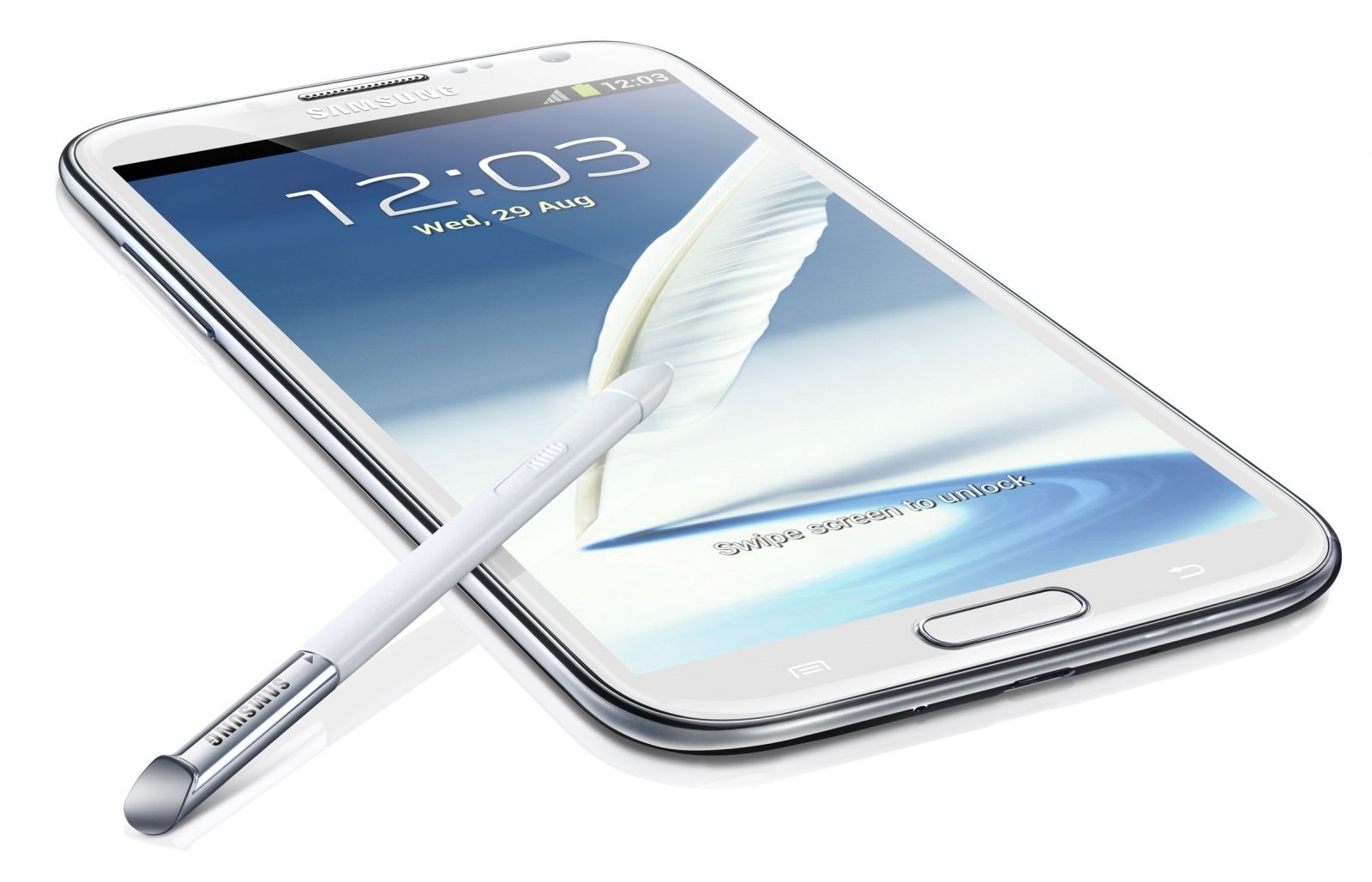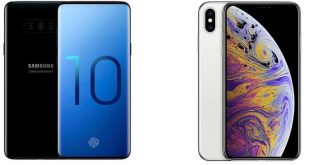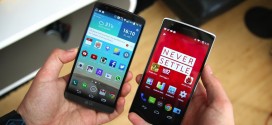The Galaxy Note 4 has been revealed by Samsung the other day at the IFA Berlin trade show and many have been saying that it lives up to expectation with its powerful specs and improved design as well. Since the Galaxy Note 4 has been such an anticipated device, surely many are thinking of buying the flagship when it goes on shelves this October for more than $1000 (allegedly).
That being said, any one of you that is planning to buy the flagship will have to save up a bit because that is no small price to pay for a phone these days. Buying on impulse is a widespread practice nowadays, so you might want to consider your alternatives if you want to upgrade your device this Fall. You’ve got lots of flagships to choose from, most below the $1000 price tag, but if you’re set on something that will help you stand out in the crowd, think about the OnePlus One.
Comparing the OnePlus One to the Galaxy Note 4 is a good idea if you are hunting for a new device because the OnePlus One will be available for pre-order, according to rumors, in October as well. Pre-ordering the One in October will probably have you wait another month until you’ll get your hands on the device, but your costs will be cut a great deal, since OnePlus’ flagship costs about $300, a considerable difference compared to the Galaxy Note 4.
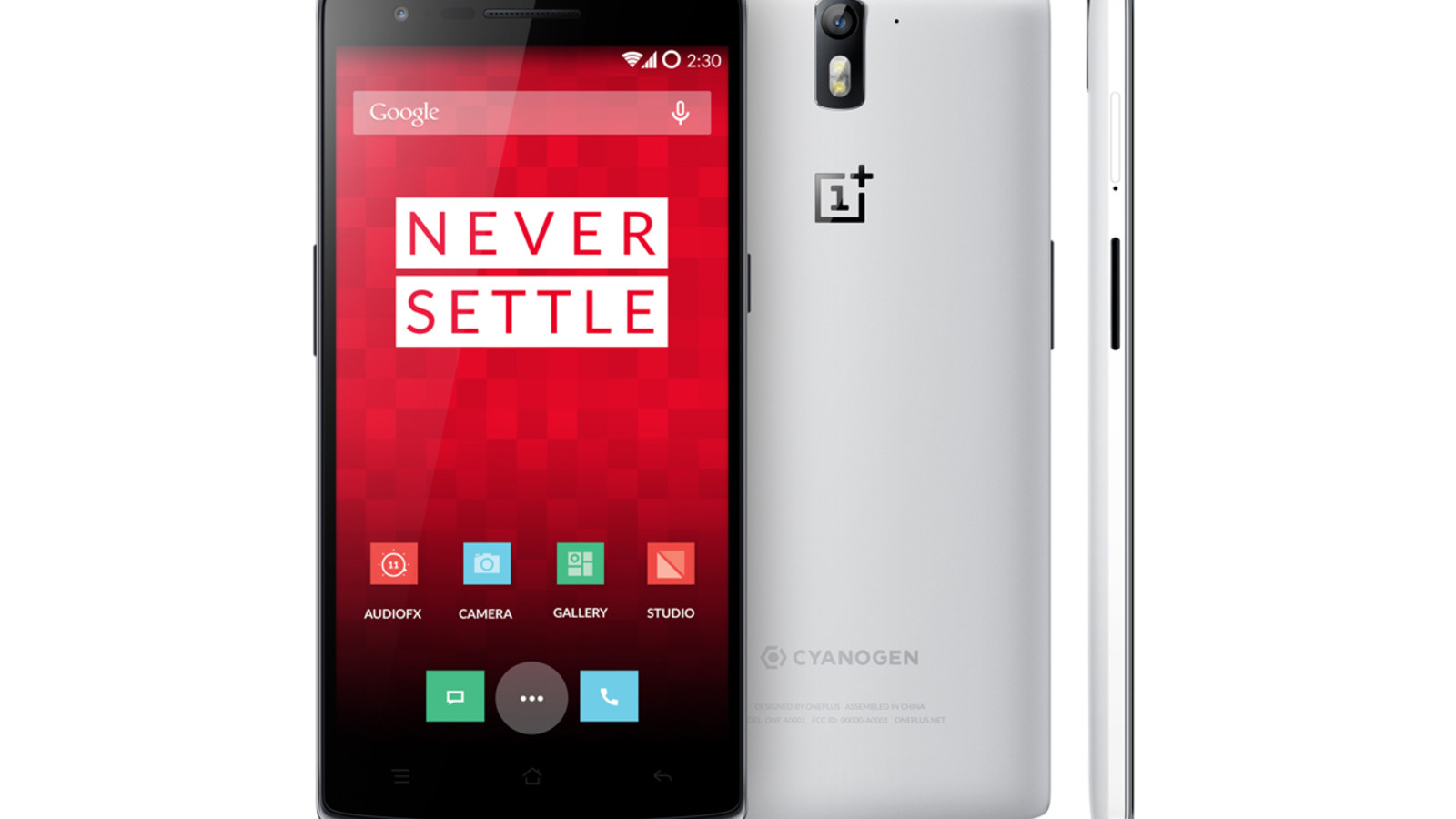
I’m in the same situation as you are, honestly. I’m thinking of getting a powerful phone that can keep up with the many tasks I use it for and the Galaxy Note 4 is really smiling at me from all the hands-on videos already available across the internet. On the other hand, pulling $1000 out of my pocket is not nearly as easy as coughing up $300 for the acclaimed OnePlus One with Cyanogen Mod. Thus, if thinking about the price you are willing to pay for a new gadget, the OnePlus One is the forerunner in this competition.
Besides price, when hunting for a new smartphone/phablet, one must always consider what they get for that price. In consequence, a comparison between the two flagships is necessary in order to correctly evaluate whether the OnePlus One is worth the extra wait or the Galaxy Note 4 the extra cash. Whichever flagship you choose, note that you probably won’t be disappointed, either way.
First off, let’s talk about size, weight, thickness and design. The One measures 152.9 x 75.9 x 8.9 mm, whilst the Galaxy Note 4 measures 153.5 x 78.6 x 8.5 mm. Deducing from these measurements, the Galaxy Note 4 is the bigger one, yet it’s also the thinner flagship in the competition. There’s not much actual difference in their size, though, so using measurements as a differentiating factor might not be the right way to go.
Design-wise, both phablets can boast with metal frames, which is a solid build quality for any phone out there. The fact that both phones employ metal and plastic in their design means a little more headache for us, though. The Note 4 comes with a leather back-plate, whilst the OnePlus One has a smooth back that is soft and matte. The Note 4 advertises curved edges and a curved body, whilst the OnePlus One is as flat as possible. In my opinion, the OnePlus One wins the design competition, but that’s just because I like flat phones with smooth backs and no extra embellishments. Both phones’ back panels are removable, which will let you choose your own type of panel when they will be ande available.
The OnePlus One has excellent button-positioning with the company clearly thinking of users with different sized hands, so to speak, putting buttons in accessible places around the middle of the phone’s side-bezels. This type of positioning allows for easier one-hand manipulation of the phone, even by those customers (like me) who have freakishly small hands. The Note 4’s buttons are left in the top parts of the phone, so that’s a small little minus there for the Note 4. Both devices have capacitative keys on the bottoms, so that’s not a differentiating factor, either.
On to the screen, one of the main selling points of the Galaxy Note 4 at IFA this year. The Note 4’s screen is once again a Super AMOLED 5.7 inch display with QHD resolution (1440*2560) with a 515 pixel density. The ultra-high quality display offers beautiful image quality, sharpness and brightness, naturally. It also has increased sensitivity for use with the S Pen. Color reproduction on Super AMOLED Samsung screens has been an issue since the Galaxy S5, but on the Note 4, it has been improved and the blue hue is not as visible as it was on the S5. Can the OnePlus One beat that screen? Definitely not. But it doesn’t disappoint either with its 5.5 inch 1920 x 1080 Full HD resolution display with 401 ppi.
Next up, raw specs. Here’s where most people were quite impressed by the OnePlus One, which offers specs almost identical to the Galaxy S5 at half the price. That being said, you have probably deduced that spec-wise, the Note 4 is better than the OnePlus One. But take into consideration the considerable gap between release-times, price and availability. Nonetheless, the OnePlus One has nothing to be ashamed of with its Snapdragon 801 quad-core Krait 2.5GHz backed by 3GB RAM and 16 or 64 GB internal storage. It’s a shame that it doesn’t have a microSD card slot, though. The Galaxy Note 4 on the other hand is much more powerful device, that’s where the considerable price tag’s part comes from. The device comes either with a Snapdragon 805 quad-core Krait 450 CPU running at 2.7 GHz or with an Exynos 5433 octa-core processor with four cores clocked at 1.3 GHz and four cores running at 1.9 GHz. Other specs include 3 GB of LPDDR3 RAM, 32 GB of internal storage memory with microSD card support up to 128 GB and Andreno 420/ARM Mali-T760 GPU, depending on the variant.
The OnePlus One seems mediocre next to the Note 4, but don’t forget that it still rivals $700 handsets like the Galaxy S5 or HTC One M8. With this in mind, coughing up a measly $300 sum for a flagship that might actually be better than what’s on the market besides the Note 4 at the moment sounds much better than getting a phone with a contract tied to is – like most of us have to because we can’t afford the $700 price tag on either of the aforementioned flagships.
Since the Note 4 has a powerful screen and CPU, it needs a considerably larger battery, namely a 3220 mAH one. The OnePlus One isn’t far behind with its 3100 mAH battery either, and with weaker specs, the battery is sure to last for a few days of power use. Nonetheless, the Note 4’s battery does offer extra features like super fast charging and ultra power-saving mode, which are sought after features in such a powerful handset.
Now, for the cameras and their features. The One sports a 13 MP. 4128*3096 pixel rear snapper with autofocus, dual-LED flash and features like touch focus, face detection, HDR and geotagging. It’s also capable of shooting video at 2160p@30fps, 2160p(DCI)@24fps, 1080p@60fps, 720p@120fps, HDR and stereo sound recording. Its front cam is a 5 MP shooter (1080p@30fps), perfect for your selfie needs. The Note 4 sports a 16 MP rear camera with OIS and a 3.7 MP front camera with extra selfie-features built in. Initial impressions from hands-on reviewers of the device are favorable and praise the wide-angle front camera that has been implemented in the device.
Last, but not least, the OS. Both devices are Android 4.4.4 KitKat based devices, but the One has a little something extra called Cyanogen Mod 11S pre-loaded on it. For those of you who haven’t heard of the UI, it’s awesome. It allows for much more customization than on most other devices and lets you design your interface fit for all the needs you can think of. The Note 4 has TouchWiz on top of KitKat, which is not new to most Samsung users out there. In terms of OS, the OnePlus One has won me over, because I’ve always admired Cyanogen Mod.
The features on the Note 4, including the S Pen, are more numerous than on the OnePlus One, including fingerprint sensor, heart rate sensor and more, so if you’re looking for something you can really show off, the Note 4 is for you. The OnePlus One is more about the OS than the hardware features, focusing on productivity and customization rather than on features one might rarely use.
Both the Galaxy Note 4 and OnePlus One are exceptional devices well above many of their competitors on the market, so there’s no question about whether they are worth their money or not. The issue here is marketing, availability and user preference actually. If you really want a high-tech, top-notch device that is the very latest model you can get, and you have the cash at hand to buy it, the Note 4 should clearly be your choice. But if you remain loyal to this year’s flagships and want something that will do all the work you need to be done just as fast as any other flagship out there, for half the price, the OnePlus One is for you.
Stay tuned for news on the OnePlus One pre-order status, for the flagship will soon be available for everyone to buy.
 Load the Game Video Games, Reviews, Game News, Game Reviews & Game Video Trailers
Load the Game Video Games, Reviews, Game News, Game Reviews & Game Video Trailers
